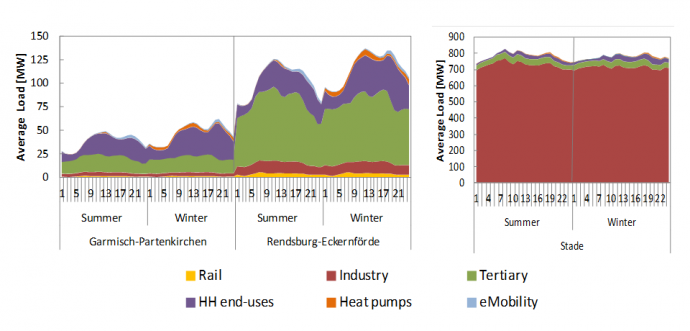FORECAST/eLOAD
-
07.08.2020 Industrial excess heat for district heating: Database shows great potential for supplying households
Excess heat from energy-intensive industries is often suitable for use in district heating systems but is usually unutilized. A detailed overview of the potentials available in the EU is now provided by a database of the sEEnergies project. In Germany, 29 petajoules of excess heat from industrial sites could be used, which corresponds to the demand of more than half a million households. The information is available as maps and downloadable datasets.
Discussion of regional electricity demand and load with industry experts and network operators
15.11.2017
German industry experts and network operators discussed upcoming trajectories of the Energiewende focusing on network development at the 12th ETP Conference (Design, expansion and reconstruction of high voltage and extra high voltage networks) in Stuttgart on 16 October 2017
The regional analysis of electricity demand and
load in Germany, calculated by FORECAST and eLOAD, forms an essential part of
the Electricity Network Development Plan 2030. At the 12th ETP
Conference, Fraunhofer ISI and the Head of Strategic Network Development /
Market Modelling of 50Hertz (German Transmission Network Operators)
collectively presented the key findings of the most recent grid analysis for
Germany. The core discussion concerned the analysis of electricity demand drivers
and factors influencing the structural shape of the load curve in combination
with their impact by region. In this context, we highlighted our findings for selected
sector-coupling technologies as well as decentralized storages to derive implications
for the design, expansion and reconstruction of high voltage and extra high
voltage networks in the future. Conference programme: 12th ETP Conference (Euroforum).

© 2024 Fraunhofer ISI | Publishing Notes | Data Protection


